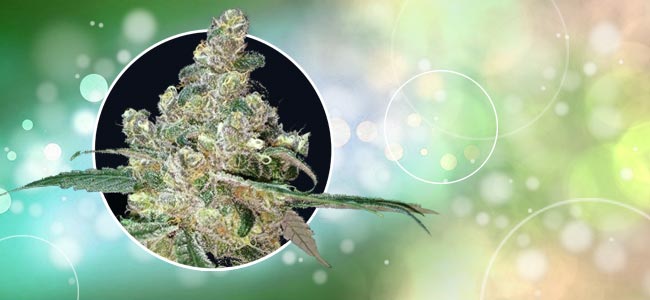A mutation is nature’s way of shuffling the cards. Sometimes, new and exciting traits happen. Take a look at some of the most interesting cannabis mutations identified around the globe.
What are Cannabis Mutations?
A mutation can be considered as nature’s engine for innovation. Technically though, it is a biological mistake that should not have occurred under normal or ideal circumstances. A mutation is the changing of a DNA sequence during replication that often results in the building of a new protein, or the modification of its current function and expression.
When a mutation produces a variation that thrives in the cannabis plant, through natural selection it is put to the test of survival. If it manages to reproduce and keep going, it becomes viable! Survival of the fittest, according to standard Darwinian theory. This mechanism is responsible for such a wonderful variety of colours, tastes and highs we all appreciate in different strains of weed.
If, on the other hand, a mutation creates a variation that for some reason does not work, it slowly fades away into obscurity. And by slowly, we mean thousands of years of natural selection.
Without getting too technical, some genes are passed along throughout generations without expressing themselves. They are still there, just dormant. The genotype is the entire genetic makeup of a particular strain, while the phenotype is the group of genes that actually “woke up” and expressed themselves physically.
Every once in a while, dormant mutants will pop out of the ground to test themselves against nature. Some are quite common, others very rare. Some are beautiful, others just creepy!
Here, we take a look at a few mutations that are known to exist.
Duckfoot Cannabis

“Duckfoot” is cannabis slang for pinnatifidofilla. It is also called simple leaf mutation, palmately lobed or webbed foot. It was first described in The Journal of Heredity in 1922 by Walter Scott Malloch who investigated sex inheritance in species.
This mutation turned into an actual strain when in 1916, Lyster Dewey first isolated this recessive gene. The original strain was named Ferramington after its parents – Kymington (a select Minnesota #8) and a landrace that came all the way from Ferrara, Italy. It is believed that this mutation originated in Ferrara.
Australian Bastard Cannabis

In mid-70’s Sydney, Australia, this mutation began making waves through breeding circles.
The loss of serrated leaves, short and stubby growth, and an all round vine-like appearance made this mutation an excellent candidate for cannabis experimentation. Despite the low THC content, you could potentially breed it into a stronger variety while still growing a very covert-looking plant. That is precisely what happened, which is why this mutation has become famous.
There have been several attempts to isolate these genes into an actual strain, but more work needs to be done until commercial viability is guaranteed.
Whorled Phyllotaxy (Tri-Lead Seedlings)

The whorled phyllotaxy mutation in cannabis is the expression of a 3-way intermodal split, creating three leaves and three individual stems. This implies a bushier plant and a potentially higher yield.
Could this be the magical “4-leaf clover” lucky charm of the cannabis world?
This is where mutations start to become more interesting and even freaky. Vine cannabis is a spin-off the aforementioned ABC – a rare occurrence that seems to pop-up when it is crossed with a gene-pool containing another unidentified mutation.
The result is cannabis that starts behaving like its close relative, the hop, which is a climbing plant. The hop, Humulus lupulus, is part of the Cannabaceae family. In this mutation, the cannabis plant will grow thinner, elongated stems that spiral with each other. This spiraling tendril behavior is not native to cannabis at all and reflects deep ancestral characteristics.
It is, however, a very interesting and thought provoking mutation.
Creeper
We are now entering the twilight zone of mutations. If a cannabis tree falls in the middle of the forest, does it make a sound? What if the plant is so huge, the side branches bow all the way down to the ground and root out again?
That is exactly what has been found out in the wild. In tropical regions that experience high humidity levels, there are certain sativas that display this bizarre trait.
They will grow very elongated stems that look more like vines than typical cannabis stems. As they put on weight, they will topple over and eventually touch the ground and root out! As the rhizosphere grabs hold, new growth occurs with added vigour – almost as if it were growing tentacles and trying to move about.
Very little is known about this mutation, but it brings some exciting potential to the breeder’s table.
Foxtail
Foxtail is a sensitive subject to some. We now know it can happen for several reasons – from pure genetics to heat stress, bug attacks and nutrient booters, and the best of hyper-dialled-in NPK.
Foxtails can be described, in general terms, as sudden spurts of growth on top of the bud that spiral outwards – just like a little fox’s tail. A very typical occurrence in indoor grow rooms all over.
Foxtailing once had a bad rep, and to be honest, it is not the most prized of traits. It is visually quite odd and can either have a positive or negative effect on productivity.
In some cases, the lower visual appeal is compensated with incredible yields. In others, the exact opposite occurs. The best growers identify this phenotype and learn to dial in their feeding regimens and “hack” their grows for massive yields. If done wrong, the plant can stress and stunt from overfeeding.
No real hazard comes to the plant if foxtailing occurs, and actual bud quality is not affected concerning effects and taste.
When it’s the result of a direct genetic trait, this phenotype will produce flimsy, little plants with tiny bud sites. No one really likes this.
On the other hand, certain phosphorous-tolerant strains may start foxtailing right after a PK boost mid-late veg. Time it right and you might end up producing baseball-sized colas that are essentially massive bundles of compact little foxtails.
credit:420intel.com

